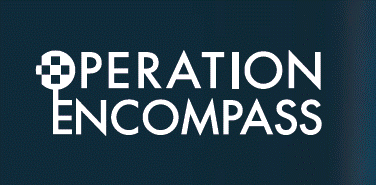The Building Blocks of Reading and Writing
Research shows that to become skilled and confident readers and writers, young children need lots of opportunities to:
Build spoken language
By a very young age, children already know lots about spoken language by talking and listening. They recognise some speech sounds; they know which sounds make the words that are important to them and they begin to mimic those sounds. Children learn this by listening to the conversations around them. Even "baby talk," which exaggerates the sounds and rhythms of words, makes a contribution to children's ability to understand language.
Learn about print and books
Knowing about print and books and how they are used is called print awareness and is an important part of learning how to read and write. Children who are aware of print understand that the words they see, speak and hear are related. Children use and see lots of print around them - on signs and billboards, in shops, in alphabet books and storybooks, on labels, magazines and newspapers. They learn that print is all around them and that it is used for different purposes.
Learn about the sounds of spoken language
Some words rhyme. Sentences are made up of separate words. Words have parts called syllables. The words bag, ball, and bug all begin with the same sound. When a child begins to notice and understand these things about spoken language, he or she is developing phonological awareness - the ability to hear and work with the sounds of spoken language.
When a child also begins to understand that spoken words are made up of separate, small sounds, they are developing phonemic awareness and will eventually be able to take spoken words apart sound by sound (segmentation) and put together sounds to make words (blending).
Learn about the letters of the alphabet
Singing the alphabet sound is more than just a fun activity. Children who engage in games and songs relating to letters quickly become familiar with the shapes and names of the letters of the alphabet, how to write them and have an easier time learning to read.
Listen to books read aloud
Reading aloud to children has been called the single most important activity for building the knowledge required for success in reading. Reading aloud, with children participating actively, helps children learn new words, learn more about the world, learn about written language and see the connection between words that are spoken and words that are written.
Helpful Tips
Talk and sing
Becoming ready for reading begins with the knowledge of a broad range of vocabulary. Children learn words by hearing them, so talk to them about what you are doing and thinking, where you’re going, and what you see. Your child will begin to understand new ideas and concepts by hearing about and discussing events, objects, and places.
Work on expanding your child’s language. If they describes something as big, offer other words that mean the same, such as huge and enormous. As your child plays, use descriptive words that relate to what he or she is exploring. Ask open-ended questions throughout the day. Reciting poems, nursery rhymes, and finger plays and singing songs are other ways to expose your child to language. They make words fun and engaging with patterns of rhythm and rhyme!
Make books a staple
Have a wide variety of books available for your child in lots of different places within their environment. As you read to your child, take your time, show excitement, and use intonation to retain your child's interest and excitement.
Point to the words on the page as you read them to begin to establish the knowledge of different words meaning different things. If your child is very familiar with the book, read the first part of a sentence and pause to see if he or she can finish it.
Allow your child to 'read' the story to you by putting their own words and thoughts to the pictures in books. Consider using a puppet to tell the story. If the text of the book is too long, paraphrase the words or just talk about the pictures.
Throughout the day, read aloud menus, signs, cereal boxes, newspapers, magazines, instruction manuals, mail, etc and explain what you are doing. For example, you might say, “I need to read the menu. It says…” or “I need to write down what we need at the store so we don’t forget anything.”
Have paper and writing utensils available
Encourage your child to draw pictures or make marks if he or she is very young while you read aloud or tell a story from memory. Invite your child to “write” along with you while you write a card or make your shopping list. Don’t forget to talk about what you are doing.
Do not worry
There is always pressure to meet or exceed benchmarks and acquire new skills for even our youngest children. We must take care to ensure that our expectations of children are realistic. Children are natural learners. The most appropriate and effective thing we can do to help children succeed is to support their interests and efforts by providing a variety of opportunities and allowing them to learn at their own pace.







